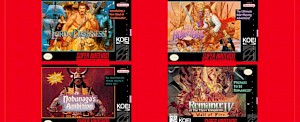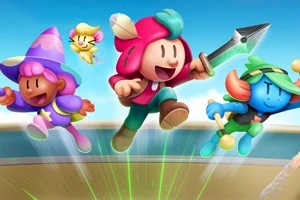What Happens NX? #2 - The Controller
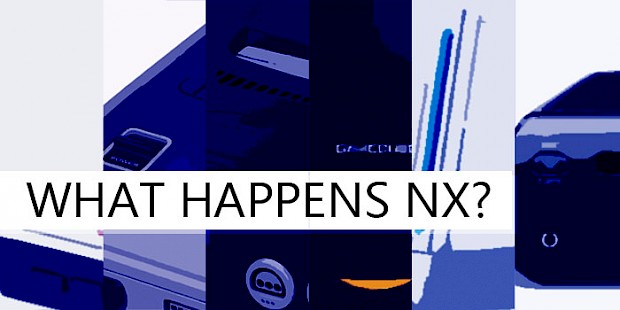
Posted 17 Apr 2016 at 17:08 by Ashley Jones
Welcome back to What Happens NX, where we look at what has and hasn’t worked for Nintendo’s last few generations, what we expect and hope from the NX and what industry-wide trends and conventions we think Nintendo may adopt, and which they may not.
The last instalment covered third parties and how their releases and relationship with Nintendo has changed over the years.
This time around we’re looking at the controller, something that has already been the subject of many fakes and rumours.
Looking Back
We’ll start by looking back at the controllers since the GameCube (the last time Nintendo released a ‘traditional’ controller as its primary controller) and see what was unique about them, what stuck around and what it tells us about Nintendo’s trajectory.
GameCube
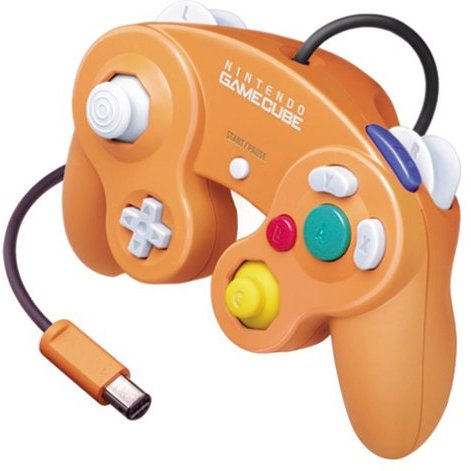 It says a lot about the GameCube controller that 12 years after its release, Nintendo sold an adapter for the Wii U that allowed you to use them for Super Smash Bros. All these years later Nintendo's second attempt at a controller for 3D games is still regarded as their best by many and the fact it sold out so quickly says a lot (about the popularity and Nintendo’s underestimation).
It says a lot about the GameCube controller that 12 years after its release, Nintendo sold an adapter for the Wii U that allowed you to use them for Super Smash Bros. All these years later Nintendo's second attempt at a controller for 3D games is still regarded as their best by many and the fact it sold out so quickly says a lot (about the popularity and Nintendo’s underestimation).
Some people complained it was too small for their hands but many felt it was ergonomic, had everything they wanted and became an extension of their own hands - the true goal of a controller. There were enough buttons for the vast majority of uses and the analogue triggers made for some ‘pure’ gaming experiences that have not been seen by their more recent consoles.
It was also the beginning of Nintendo breaking with convention, as opposed to previously defining it. It's a small thing, ironically, but the large A button and shape and position of other buttons was a uniquely Nintendo way of trying to make it easier for gamers to play without having to look at the controller. Which puts it at odds with the GamePad that can often demand you look at it - either because you’re learning the layout at first or you need to look at the screen..
Having a large button that acted as an anchor helped you to know exactly where the other buttons were easily. Even the shapes helped to differentiate the primary (A and B) buttons from the secondary (X and Y) and it is easy to know the buttons through touch alone.
Wii
![]() And now for something completely different…
And now for something completely different…
The Wii was a break from convention, both the console and controller. It did away with controllers with many buttons and even how you interacted with the console.
Nintendo banked on a stripped-down controller with motion input appealing to people who did not traditionally play games and it paid off. Big time. The success of the Wii took many by surprise, even Nintendo themselves who struggled to manufacture the console quick enough in the early years.
While the Wii Remote and Nunchuck did away with a lot of what came before, it there are still little hints of its predecessors. We once again have the A button acting as an anchor and there are some buttons you couldn't even see, but due to the design you knew where they were without looking not long after you pick it up.
Of course the motion input started a new trend and soon saw similar on rival platforms. Nintendo was not the first to use it, but they brought it to mass market. Sony and Microsoft have subsequently reduced its prominence in their latest consoles, after initially doing their own versions midway through last generation, while Nintendo has continued to support it in essence but the focus has shifted to a combination of different inputs.
Refined controllers mid-cycle is not uncommon now, but other than Sony's U-turn at the start of the PS3 that saw the introduction of the DS3, no other company has split their audience into ‘haves and have nots’ when it comes to controllers like Nintendo did with the Wii’s MotionPlus. Most of the time the refinements have made for better experiences, not divided ones. Nintendo fans suddenly found themselves needing to hand over extra money to enjoy titles such as Wii Sports Resort or The Legend of Zelda: Skyward Sword, although the latter did come with a controller included initially.
In a way it's no different from the Expansion Pak of the N64 in that it brings new tech to an existing controller, but the impact feels more significant given the expanded audience and the fact the Wii U still supports these controllers. Nintendo managed to make it easier for a ‘non-gamer’ to use a controller than to know which could, or should, be used.
Wii U
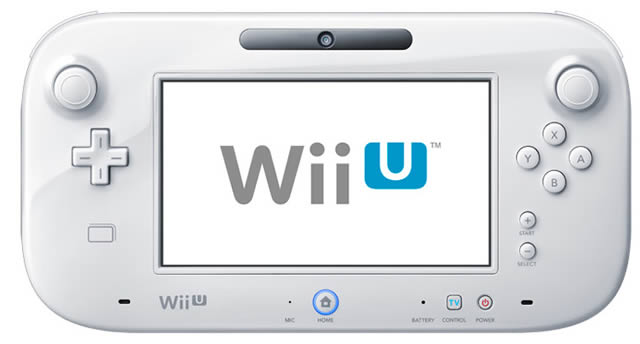 The GamePad is the controller that seemingly can do everything, but should it have to? In the three and a half years since launch only a handful of titles have used certain aspect of the GamePad. Nintendo made the embarrassing claim that even they hadn't really found many uses for it two years ago and have subsequently made more of an effort recently.
The GamePad is the controller that seemingly can do everything, but should it have to? In the three and a half years since launch only a handful of titles have used certain aspect of the GamePad. Nintendo made the embarrassing claim that even they hadn't really found many uses for it two years ago and have subsequently made more of an effort recently.
Then there's the screen. Nintendo's USP for the console. A revolutionary savour for some fans, an expensive burden for others. When Nintendo announced the Wii U they talked about how the inbuilt screen would allow for off-TV play and asynchronous gaming. One of those has certainly been achieved…
We've had some unique asynchronous games, but has it been enough to justify the GamePad? It is open to debate, obviously, but I'm hard-pressed to think of many compelling uses of it that I personally felt were lacking in gaming. Sure, it's provided different experiences but has it provided the revolution Nintendo were on about? Nintendo Land is one standout title for asynchronous gaming, with some of the games on offer being truly unique experiences you couldn’t get elsewhere. Members of the forum recently discussed how it is a shame Nintendo Land was never supported with DLC that could have not only provided advertisement for new releases (i.e. they could release Star Fox games at the moment for Star Fox Zero) but as Nintendo looked to explore different uses for the GamePad they could do so through new Nintendo Land attractions.
Which brings us onto off-TV play. Some people swear by this and use it frequently, but others argue in this day and age where kids have their own TVs in many households is it anything more than a way to please spouses that want different things without compromising with services like Sky+ or catch up?
I posted a topic some time ago asking our forum members how frequently they used Off-TV play. As of April 16th 2016 42 people had voted with the results as follows:
Use it exclusively | 5 | 11.90% |
Use it if TV is unavailable | 11 | 26.19% |
Use it sometimes if TV is unavailable (other times don't bother playing) | 2 | 4.76% |
Every now and then | 10 | 23.81% |
Tried it a few times | 8 | 19.05% |
Never | 6 | 14.29% |
The sample is obviously small, but I found it interesting that the majority seldom or never use it (the last three categories). It’s a big part of the Wii U’s unique selling point, but it seems in our small survey it doesn’t hold much appeal.
Of course the sample survey mostly comprises males in their 20s so it is not representative of the wider Wii U audience. While I suggested above kids will have their own TVs, it is of course not always true in all households and there might be instances where this is still a shared TV.
The fake NX controllers we’ve seen so far have all featured a screen and Nintendo is known for offering back catalogue support so many people are expecting the NX controller to be like the GamePad in some shape or form, but is it wanted?
Off-TV play has some really dedicated champions that now state they can not imagine being without it, but it would be great to know through a more representative survey whether it is used often by Wii U gamers (feel free to let us know in the comments).
Other than this, the screen has mostly been used for touch input or just to display some elements onto the second screen. While New Super Mario Bros. U allowed you to touch to place platforms, I personally always felt Rayman Legends was slowed down by switching over to the GamePad for Murfy slowed the game down in comparison to the version found on other consoles (I’m aware most others don’t share my opinion though). Ultimately it comes down to usage, and frankly it’s not been used much.
Being able to display something on another screen has quickly become ‘display the map and/or menu on the second screen’. Useful, sure, but something that we can not live without? And the less said about Mario Kart 8 before the patch moved the map back onto the TV screen the better.
Innovate or Iterate?
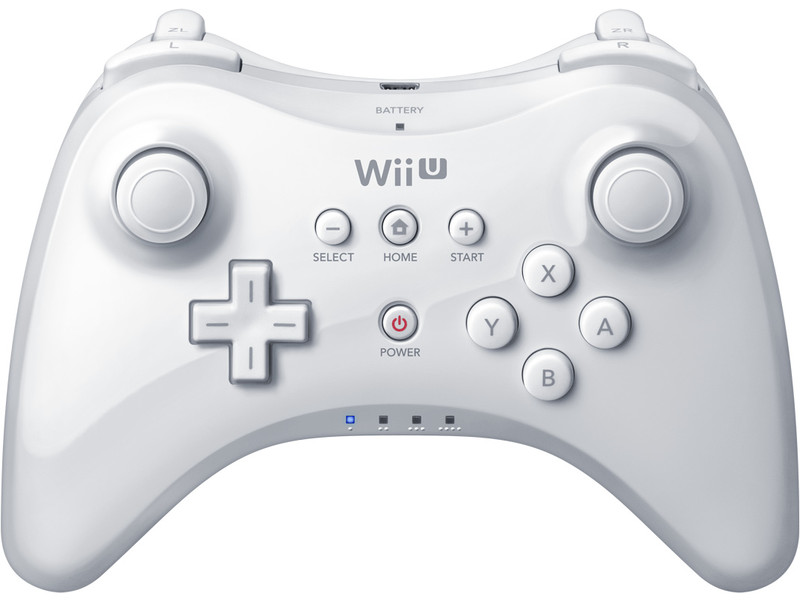 Nintendo has been creating exciting new innovations for its controllers since they’ve been around. Each console has refined what has come before it and often introduced new ideas, many of which have become standard aspects of controllers.
Nintendo has been creating exciting new innovations for its controllers since they’ve been around. Each console has refined what has come before it and often introduced new ideas, many of which have become standard aspects of controllers.
However, with the Wii and then the Wii U some fans feel Nintendo is losing track of what made their controllers great. They may both be innovative and introduced some new standards to the industry, but both sacrificed what has become the ‘standard’ controller design.
The Wii U returned to it somewhat, but the controller was stretched and a screen plonked in the middle. Given its size the GamePad is reasonable comfortable, but the tech under that plastic drains battery fairly rapidly (although it’s not the only console to be guilty of this) and some fans have stated they’d rather just have a standard controller.
Both the Wii and Wii U had the option of a more traditional controller, in the shape of the Classic Controller / Pro and the Wii U Pro Controller. As a lot of Wii titles were built around the motion controller, the Classic Controller / Pro couldn’t be used and when it was used it had to awkwardly be plugged into a Wii Remote that would then just sit there. The Wii U Pro Controller fared better given it was pretty much a GamePad without a screen, but those games that then required the GamePad in some capacity were incompatible or were made much more difficult to use.
Nintendo’s main competitors, Sony and Microsoft, have been accused of barely trying to innovate but one thing they have done is refined their own controller experiences as each generation has gone by (or sometimes mid-generation) and their latest controllers are comfortable and practical but obviously not faultless.
Some of Nintendo’s fans would rather Nintendo look to have something more in line with the DualShock 4 than a new GamePad-like controller. The reasons are varied, but arguments could be made that developers will be more likely to release games on the NX if there is controller parity with the other consoles.
While the Wii didn’t suffer from a lack of games, as shown in the last instalment, it’s unique controller scheme meant many developers had to make radical changes to the input in order to work with the Wii Remote and Nunchuck. Obviously no console port is ever going to be straightforward and there will always be challenges, but the more obstacles you put between developers and porting the more they may question whether or not it's worthwhile or do a half-hearted job.
Forum members have recently been discussing EA’s early support (or lack thereof depending on how you look at it) of the Wii U and while the discussion wasn’t really about the controller the same idea applies - if you make it more difficult for a developer to port a game (because of different architecture, weaker specs etc) the less likely they will do so, particularly if the sales do not justify it. The same is true, to an extent, for controllers. If you have two controllers that are largely identical and then the NX controller is some rugby ball-shaped thing with a curved screen and less buttons it becomes more difficult to support all. Call it laziness if you want, but it’s certainly a factor.
How many controllers?
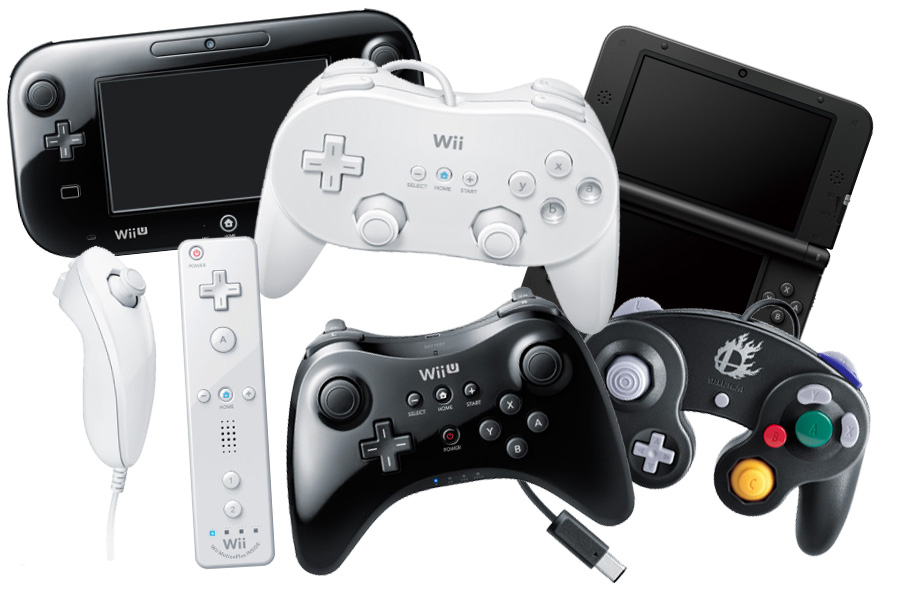 One thing Nintendo didn’t do well with the Wii is the way they fractured the controller into numerous variations that left gamers out of pocket and developers with various options, but ones that seemly require mutual consolation rather than simply providing options that Nintendo would like.
One thing Nintendo didn’t do well with the Wii is the way they fractured the controller into numerous variations that left gamers out of pocket and developers with various options, but ones that seemly require mutual consolation rather than simply providing options that Nintendo would like.
Some games are controlled with just the Wii Remote. Others require the Nunchuck. Others can use the Classic Controller. Some require the Classic Controller Pro. Then there's MotionPus. It's nice to have options, but this became a mixture of possibilities and requirements that could easily confused the less dedicated gamers Nintendo had managed to attract.
Of course the controllers are still supported by the Wii U, which helps Nintendo justify their existence, but arguably if having too many controllers was a problem last generation it's a bigger one this time round as this generation saw two more controllers enter the mix.
The GamePad and Pro Controller now opens up the variation to an unheard amount for any console. Some people will love this obviously and certainly the appeal to play how you wish certainly helps games like Pikmim 3 and Super Smash Bros., but the fact the latter can result in four different control methods used at once is nothing short of confusing for anyone just looking to pick up and play.
The fakes
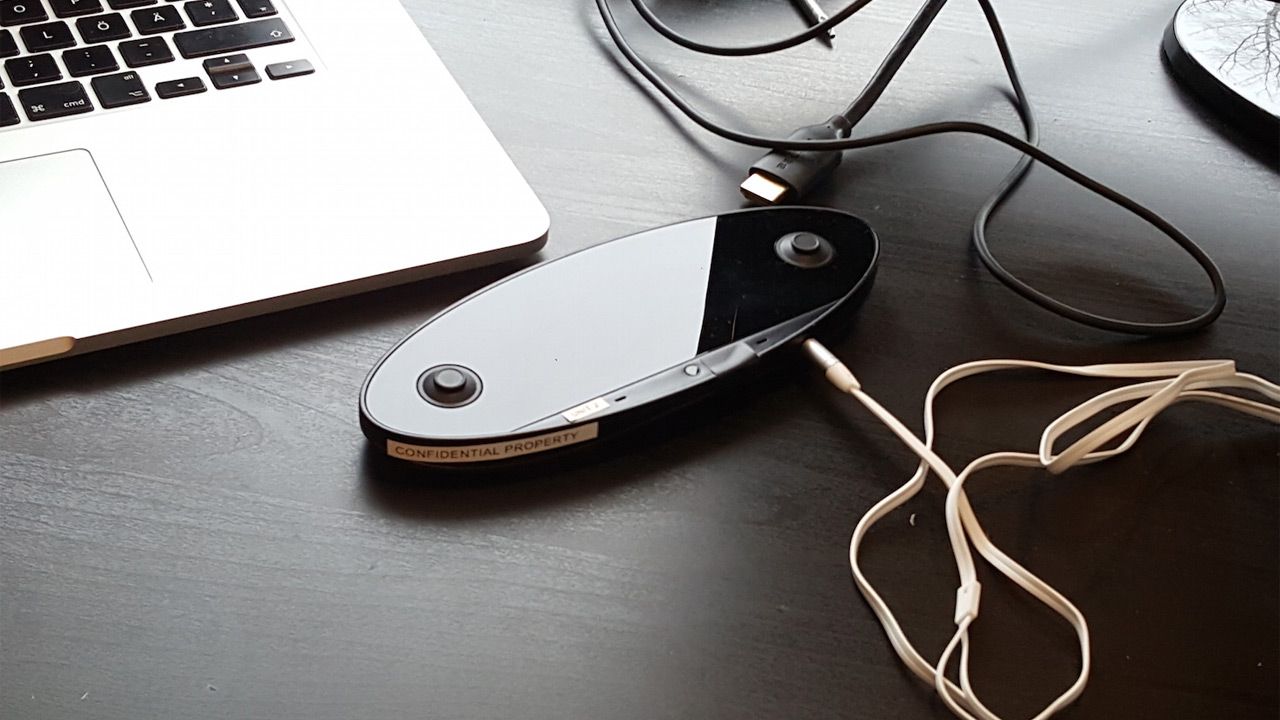 Recently we’ve seen a few fakes that got a lot of people talking. Whether you believed them or not, it certainly sparked many conversations about what people expect Nintendo to do and what they’d like them to do (and if these two things matched up).
Recently we’ve seen a few fakes that got a lot of people talking. Whether you believed them or not, it certainly sparked many conversations about what people expect Nintendo to do and what they’d like them to do (and if these two things matched up).
Fans are always going to have a variety of opinions about what is best, usually derived from a personal opinion rather than any kind of objective ‘for the betterment of gaming’ point of view. That being said, the fake controllers split people broadly into the “not this again” and “this looks good” camps.
The first group were concerned that in trying to cherish the past, Nintendo would be hurting its future. The GamePad, while beloved by some, didn’t prove to bring in mobile gamers the way many assumed Nintendo wanted (whether or not they did want it is a different issue). Some people consider it a failed experiment that should be left in the past as developers, Nintendo included, have not always known what to do with it. In trying to allow for backwards compatibility, while a noble goal in its own right, there is a fear Nintendo may just extend the problems the GamePad faced for another generation. And then what? Does the screen-based controller become the new norm? Or does every generation going forward have a screen controller and a ‘standard’ one?
I spoke in my last article about the problems the fakes would present to third parties if they were true. Obviously they weren’t real, but the patent that Nintendo filed does still feature a curved screen, which I previously argued would prove a problem for porting titles for other developers. We all know that some patents never get used, and there have been even weirder projector-like patents pop up recently that has gotten people talking.
Another big issue that came out of the fakes was the programmable buttons. According to the fakes, developers would be able to map whatever buttons they want to the screen. Some suggested the controller would have physical buttons you could use how you wish, while another suggested there would be no physical buttons so one game could have one button and another fifteen.
The idea of customised buttons is an interesting one, but it would raise the question ‘who is Nintendo aiming this for?’ Their goal with the Wii was to make gaming more accessible and to remove the fear or confusion non-gamers felt when faced with a controller full of buttons. It led to incredible sales, but some longtime fans felt they were being ignored (for reasons beyond just the controller obviously). The GamePad then kind of did an about-turn, offering players a lot of buttons, a screen, a microphone, NFC… Was that Nintendo overestimating its simplicity or essentially trying to go back to more ‘traditional gamers’? And what about the NX? Who is, or should, Nintendo be targeting and how what role will the controller play in this?
The competitors
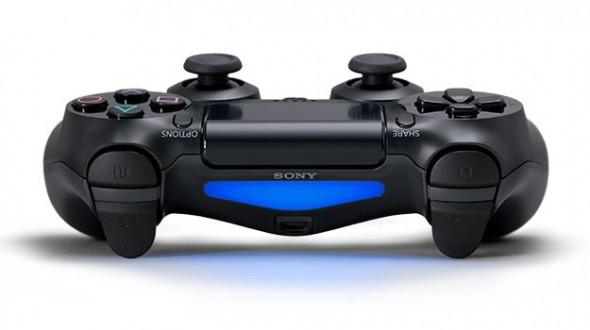 Nintendo has always been different from their competitors for a number of reasons and the controller is certainly one aspect of console design that they have strayed from the usual path. Of course some of Nintendo’s past innovations have become modern standards adopted by many others, but what aspects of the competition should Nintendo look to when it comes to controllers?
Nintendo has always been different from their competitors for a number of reasons and the controller is certainly one aspect of console design that they have strayed from the usual path. Of course some of Nintendo’s past innovations have become modern standards adopted by many others, but what aspects of the competition should Nintendo look to when it comes to controllers?
The GamePad is very different from the DualShock 4 or Xbox One controllers, but take away the screen and they become very similar in terms of design and functionality.
Sony’s DualShock 4 is in ways most like the GamePad, with the screen replaced by the touchpad. Obviously you can’t use it in the same way due to the lack of visuals on the touchpad, but it has allowed for a more open-ended input for developers to use as they wish. Similar to the GamePad, the touchpad has been underutilized by most developers. Some have used it simply as a button to press, while others have allowed for swipes and touches on different sections. Assassin’s Creed IV: Black Flag provides one of its most interesting uses - pressing the touchpad down opens the map where you can move around and zoom using the touchpad. Some fans love the ability to see the map on the GamePad and this proves that a similar experience can be provided through other means.
Other than this, the only really unique feature about the DualShock 4 is the light sensor at the back. It essentially emulates the wand-like Move controllers from the PS3 from a technical point of view, but it has mostly been used to change colours to indicate health (if used at all). It’s one of those nice little features, but like aspects of the GamePad it’s often ignored. This may change with the upcoming PSVR however, we’ll have to wait and see!
Of course one aspect about the PS4 that could very well be seen in the NX is how it supports using the Vita as a controller for remote play. While the Vita and PS4 were designed separately, they share a lot of the same architecture (with some concessions), allowing for gamers to remotely play their PS4 games on their Vita. It may not have the minimal lag that the Wii U does, but then it’s primarily designed to play away from the TV rather than at the same time and it’s thus less of an issue. It does mean that gamers can effectively take their console with them around the world by simply leaving the PS4 on standby and then connect their Vita to a WiFi connection.
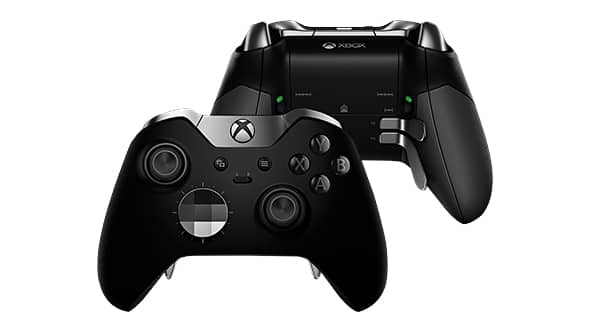 The Xbox One Controllers are largely an iterative update of the Xbox 360 one rather than adding anything radically new. Microsoft addressed issues the 360 had and improved on them, making an all-around solid controller. The 360 controller was seen by many as the best gaming controller last generation and Microsoft has done well to not take a step backwards.
The Xbox One Controllers are largely an iterative update of the Xbox 360 one rather than adding anything radically new. Microsoft addressed issues the 360 had and improved on them, making an all-around solid controller. The 360 controller was seen by many as the best gaming controller last generation and Microsoft has done well to not take a step backwards.
What Microsoft has done with the Xbox One that is interesting and sets it apart from their competitors is the Elite controller. While this may initially seem like an expensive nicer-looking controller, it is actually customisable in a way that console manufacturers do not usually offer. The thumbsticks and d-pads can be changed and removable paddles on the back allow you to reduce the distance the trigger travels, but they can also be mapped to any regular buttons allowing you to move something (such as up on the d-pad) to them. Additionally gamers can change thumbstick and trigger sensitive, vibration amounts and other little tweaks making the controller yours. Microsoft may not have added a lot of fancy new things to their controller this generation, but they have refined the existing controller and clearly tried to cater for all audiences - from first timers to the more loyal gamers.
What happens NX?
So where does Nintendo go? On the one hand Nintendo is rightly seen as a company that innovates when it comes to gamer-player interactions and that is a heritage I’m sure they’d love to keep. On the other, the gap between Nintendo and its competitors is getting bigger. It all depends on what Nintendo wants to do with the NX - try and win around some of the competition or to draw a line in the sand and say “we’re completely different”.
They have been doing this with the Wii and Wii U and some may say they’ve already made their intent clear, but at times their approach to the Wii U, both in terms of the console itself and the company’s statements on their desires, seems to have been designed to win back some fans that felt unloved during the Wii’s growth to the mass market.
I have no way to justify or prove this, but to me it feels like the NX will be make or break for certain people. They’ve already lost some fans they have a very slim chance of getting back, but they do still have a large fanbase of people that have been playing their games for over 20 years. For some of these people, that is most (if not all) of their life. They may not be keen on what Nintendo is doing at the moment, but that kind of loyalty is a hard thing to shift and in the right circumstances they would come back to make the NX their primary console (it seems many people at the moment have the Wii U as a secondary console).
If Nintendo ticked certain boxes (which obviously vary between individuals and that is part of what makes it so hard) they may come back to Nintendo and champion them once more. Or they won’t. It really does depend on a number of things. The controller will play a big part. If it’s ‘standard’ then that might be a selling point to fans and developers.. If it's something completely different, it depends on what shape it takes and whether it does inspire some truly unique games that will justify its existence.
The only thing we can be reasonably confident in is that whatever shape or form it takes, its probably going to feel great. Other than the GamePad and GameCube controller, which can get uncomfortable after extended periods of play for some and too small for some people (respectively), people have seldom criticised Nintendo’s ability to make an ergonomic controller.
Nintendo could do well to learn from their competitors. While they haven’t made the radical innovations with their controllers that Nintendo has, they have consistently improved and refined them. Nintendo has done that in parts, but given that their controller shape, functionality and input has changed every generation for the last few it is difficult to do so in the same way.
The Xbox 360 controller was seen as the pinnacle of controllers for gamers and the Xbox One controllers, particularly the Elite version, has sought to refine it further. The customisation is something that hopefully we’ll see more of from all consoles going forward, and some of the common rumours about the NX are to do with this (namely the ability to programme buttons).
Sony’s PS4/Vita model is a good one to look to if Nintendo is looking to share architecture and allow for a more easily interchangeable approach between console and handheld gaming. Just as people may swap their phones for their tablets when they get home, if Nintendo builds a truly shared system they could take their handhelds with them during the day and use their console at night in a truly shared experience, rather than complimentary, they could be onto a winner. Sony has shown that something akin to this is possible with two consoles that weren’t explicitly designed to do this (although obviously when the PS4 was built it will have had this in mind, but they weren’t designing both together) and hopefully Nintendo can not only build on it, but add their own unique approach. People have suggested the handheld console may actually be the home console controller and it would certainly help to make this idea a reality.
Trying to guess what Nintendo might do next with a controller is a fool’s errand though. We often think we know what Nintendo may do and they pull out something left-field. We can however hope for certain things, but we’ll just have to wait and see what Nintendo has in store for us.

Gif made by Christian Tailor.

